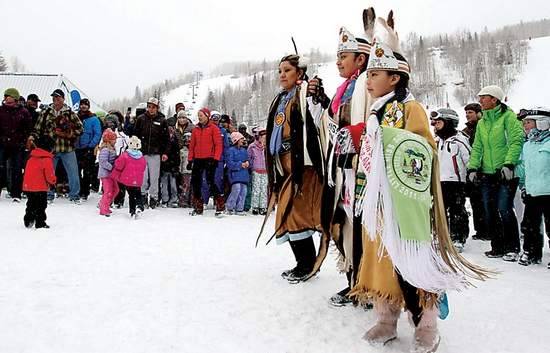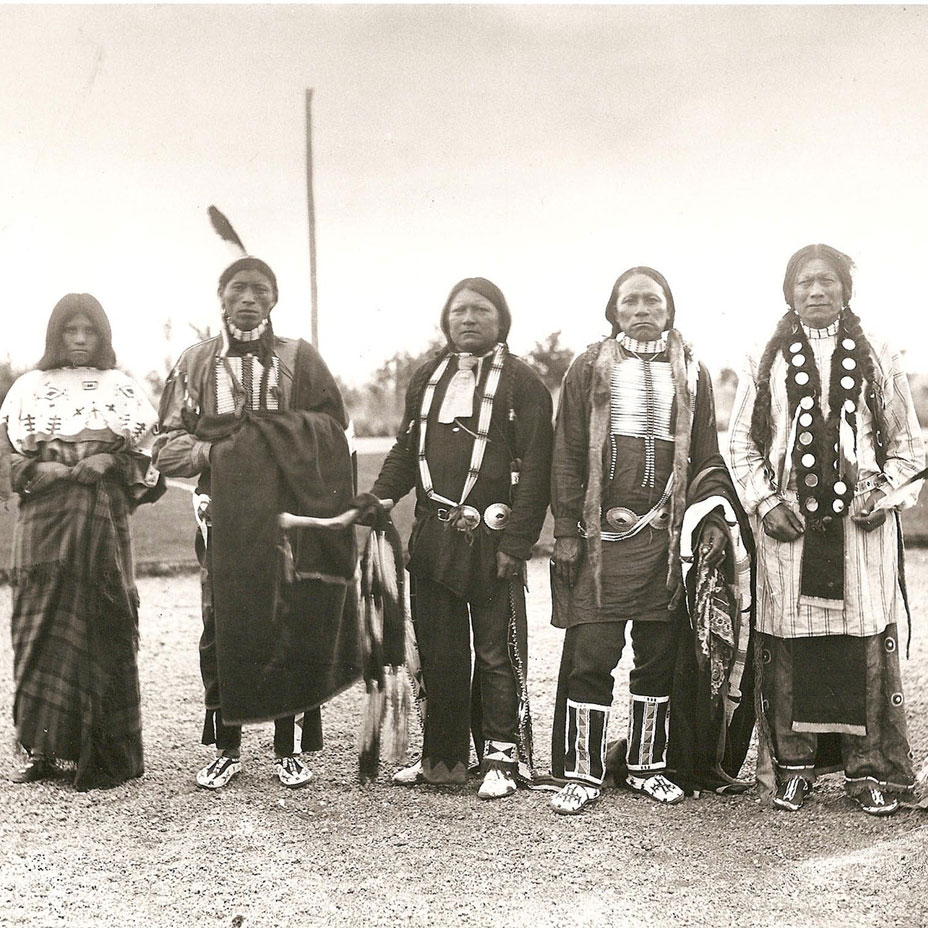
Echoes of the Shining Mountains: Unveiling the Enduring Cultural Practices of the Ute Tribe
From the snow-capped peaks of the Rocky Mountains to the arid expanses of the Great Basin, a profound and enduring spirit resonates—that of the Ute people. For millennia, the Nuche, or "The People" as they call themselves, have been inextricably linked to this vast and diverse landscape, their culture shaped by its rhythms, its resources, and its profound spiritual significance. Despite centuries of immense pressure, displacement, and attempts at assimilation, the Ute Tribe has maintained a vibrant cultural identity, a testament to their resilience, adaptability, and an unwavering commitment to their ancestral ways.
This article delves into the rich tapestry of Ute cultural practices, exploring their deep connection to the land, their sacred ceremonies, artistic expressions, and the vital role of language and oral traditions in preserving their heritage. It also examines the contemporary challenges and the remarkable efforts undertaken by the three distinct Ute tribal nations—the Ute Indian Tribe of the Uintah and Ouray Reservation, the Southern Ute Indian Tribe, and the Ute Mountain Ute Tribe—to ensure their traditions thrive for generations to come.

Roots in the Land: The Heartbeat of Ute Identity
For the Ute people, the land is more than mere territory; it is a living entity, a sacred relative, and the very foundation of their existence. Their ancestral domain, stretching across parts of present-day Colorado, Utah, New Mexico, Arizona, Wyoming, and Nevada, was a bountiful provider and a spiritual guide. Historically, the Ute were a nomadic, hunter-gatherer society, their movements dictated by the seasons and the migration of game, particularly deer, elk, and buffalo, as well as the availability of wild plants like berries, roots, and pine nuts. The introduction of the horse in the 17th century revolutionized their way of life, enhancing their hunting capabilities and extending their nomadic range, transforming them into formidable warriors and skilled horsemen.
This deep-seated connection to the land is woven into every aspect of Ute culture. "Our elders teach us that the land is our first teacher, our provider, and our sacred trust," explains a tribal elder, emphasizing the inherent reciprocity. "Every mountain, river, and valley holds a story, a lesson, a piece of our history that connects us to our ancestors." Traditional ecological knowledge, passed down through generations, guided their sustainable practices, ensuring the health of the environment that sustained them. This intimate relationship continues today, influencing land management decisions, resource utilization, and the ongoing fight for land rights and sovereignty.
Sacred Rhythms: The Enduring Power of Ceremony
Central to Ute cultural practices are their profound spiritual ceremonies, which serve as vital conduits to the sacred, reinforcing community bonds and celebrating the cycles of life. Two of the most significant are the Bear Dance and the Sun Dance, both ancient traditions that continue to be practiced with reverence and vitality.
The Bear Dance (Ma’mugi): A Celebration of Spring and Renewal
One of the oldest and most iconic Ute ceremonies, the Bear Dance, typically takes place in the early spring, coinciding with the awakening of bears from hibernation. It is a time of renewal, healing, and courtship, symbolizing the reawakening of the earth and the anticipation of new life. The ceremony is characterized by its unique music, produced by a rasp (Muwivi) made from a notched stick scraped with another stick over a hollow box or log, creating a distinctive, rhythmic sound believed to mimic the growl of a bear.
Participants, primarily men and women dancing in pairs, move in a shuffling, circular motion, mimicking the bear’s movements. The dance can last for several days, fostering community spirit and providing opportunities for social interaction and celebration. "The Bear Dance is not just a performance; it’s a living prayer," says a cultural preservationist. "It connects us to the spirit of the bear, to the land, and to each other, reminding us of our responsibilities and our place in the natural world." It is a powerful affirmation of Ute identity and their enduring connection to the animal kingdom.

The Sun Dance (Wi-wapi): Sacrifice, Vision, and Community
The Sun Dance is a more intensive and deeply spiritual observance, typically held in the summer. Practiced by many Plains and Plateau tribes, the Ute Sun Dance is a profound act of sacrifice, prayer, and renewal for the individual and the community. Participants, primarily men, commit to several days of fasting from food and water, dancing from sunrise to sunset, and often engaging in piercing rituals as a physical offering for their people, for healing, or in fulfillment of a vow.
The construction of the Sun Dance lodge itself is a sacred act, with a central pole representing the Tree of Life, connecting the earth to the heavens. The ceremony is a powerful demonstration of spiritual devotion, physical endurance, and communal solidarity. It is a time for introspection, vision-seeking, and reaffirming one’s connection to the Creator and the universe. While aspects of the Sun Dance are highly sacred and not openly discussed, its enduring practice underscores the deep spiritual foundation of Ute culture and their commitment to communal well-being.
Artistic Expressions: Weaving Identity and Story
Beyond ceremonial practices, Ute culture finds vibrant expression in its rich artistic traditions. Craftsmanship, imbued with both aesthetic beauty and practical utility, serves as a powerful medium for storytelling, preserving history, and reinforcing cultural identity.
Basketry: Ute women were renowned for their exquisite basketry, utilizing natural materials like willow, sumac, and yucca. These baskets, ranging from tightly coiled water jugs sealed with pine pitch to open-weave utility baskets, were not merely containers; they were works of art, often adorned with intricate geometric patterns or symbolic designs. The skills involved in gathering, preparing, and weaving the materials were passed down through generations, embodying patience, precision, and a deep knowledge of the natural world.
Beadwork and Regalia: With the introduction of glass beads through trade, Ute artisans developed a distinctive style of beadwork, adorning clothing, moccasins, bags, and ceremonial items. Intricate floral and geometric designs, often vibrant and colorful, reflect individual creativity and tribal aesthetics. Traditional regalia, worn during ceremonies and powwows, are meticulously crafted, featuring beadwork, quillwork, elk teeth, and feathers, each element carrying specific meaning and reflecting the wearer’s identity and achievements. These artistic expressions are not static relics but living traditions, constantly evolving while maintaining their cultural roots.
The Living Voice: Language and Oral Tradition
The Ute language, part of the Uto-Aztecan language family, is the soul of the Ute people. It encapsulates their unique worldview, their humor, their history, and their understanding of the universe. For centuries, the Ute language was the primary vehicle for transmitting knowledge, values, and cultural practices from one generation to the next.
Oral traditions—stories, songs, legends, and historical narratives—are central to Ute pedagogy and cultural preservation. Elders are revered as living libraries, their wisdom and experiences shaping the younger generations. These narratives often explain natural phenomena, impart moral lessons, recount tribal history, and celebrate heroic figures. "To speak our language is to connect directly with our ancestors, to hear their voices, and to understand the world as they did," notes a language revitalization advocate. "It’s the key to our identity."
However, like many Indigenous languages, Ute has faced significant threats due to historical policies of forced assimilation, particularly through boarding schools that punished children for speaking their native tongues. Today, dedicated efforts are underway across all three Ute tribal nations to revitalize the language. Programs include language immersion classes, intergenerational teaching initiatives, creation of language apps and resources, and the documentation of elder speakers. These efforts are crucial not only for linguistic preservation but also for cultural continuity and self-determination.
Modern Challenges and Enduring Resilience
The path of the Ute people has been fraught with challenges since European contact. Treaties were broken, lands were forcibly taken, and their populations decimated by disease and conflict. The reservation system dramatically altered their traditional nomadic lifestyle, imposing new political and economic structures. Policies aimed at assimilation, such as the Dawes Act and boarding schools, sought to dismantle their cultural practices and sever their connection to their heritage.
Despite these immense pressures, the Ute people have demonstrated an unwavering spirit of resilience. Today, the three Ute tribal nations are sovereign entities, exercising self-governance and working tirelessly to overcome historical trauma and contemporary disparities. They are actively engaged in economic development, managing natural resources such as oil and gas on their lands, and investing in tribal enterprises to create opportunities for their members.
Crucially, cultural preservation and revitalization are at the forefront of their efforts. Tribal cultural centers, museums, and educational programs are dedicated to teaching the Ute language, traditional arts, history, and ceremonies to younger generations. Powwows, vibrant celebrations of Native American culture, serve as important gatherings where Ute people can share their songs, dances, and regalia, reinforcing community bonds and celebrating their heritage publicly.
Conclusion: A Future Rooted in Tradition
The cultural practices of the Ute Tribe are not relics of the past; they are living, evolving traditions that continue to shape the lives of the Nuche people today. From the ancient rhythms of the Bear Dance and the profound spiritual journey of the Sun Dance to the intricate artistry of their beadwork and the sacred narratives embedded in their language, Ute culture is a testament to their profound connection to their ancestral lands and their enduring spirit.
As the Ute people navigate the complexities of the 21st century, they do so with a deep respect for their heritage and a clear vision for the future. Their commitment to language revitalization, cultural education, and tribal sovereignty ensures that the echoes of the Shining Mountains will continue to resonate, carrying the wisdom, strength, and beauty of the Ute people forward for countless generations to come. Their story is one of survival, adaptation, and the powerful, persistent pulse of cultural identity against all odds.


